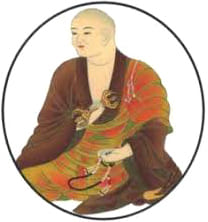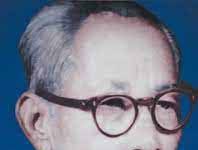Kukai | Kobo Daishi | Brief Biography
Kukai | Kobo Daishi
Kukai, also known as Kobo Daishi, was a Japanese Buddhist monk, scholar, and founder of the Shingon sect of Japanese Buddhism. He lived from 774 to 835 CE and is widely regarded as one of the greatest Japanese thinkers and writers of his time.
Kukai was born in Shikoku, Japan, the son of a local chieftain. As a young man, he showed a keen interest in religion and spirituality and eventually decided to become a monk. He began his monastic training at the age of 15, studying under several different teachers and learning about various Buddhist teachings and practices.
In 804, Kukai traveled to China in order to deepen his understanding of Buddhism. There, he studied under the famous master Hui-Kuo and learned about the esoteric teachings of the Shingon sect. Upon his return to Japan in 806, he founded the Shingon sect in Japan and quickly gained a large following.
Kobo Daishi was known for his deep understanding of Buddhist philosophy, as well as his expertise in a wide range of subjects including literature, calligraphy, and architecture. He was a prolific writer and is credited with composing numerous works on Buddhist teachings, including the “Maha-Vairocana-Abhisambodhi-Tantra,” which is considered one of the most important texts in the Shingon tradition.
In addition to his work as a teacher and writer, Kukai was also known for his humanitarian efforts. He was a strong advocate for the education of women and founded several schools for girls in Japan. He also worked to improve the lives of the poor and oppressed and was widely revered for his compassionate and selfless spirit.
In 835, Kobo Daishi passed away at the age of 61. Despite his death, his influence continued to grow, and he was later posthumously declared a saint by the Japanese emperor. Today, Kukai is remembered as a great master of Buddhism, a brilliant scholar, and a pioneer of esoteric Buddhism in Japan.
Kukai’s legacy continues to be felt in Japan and around the world. His teachings and writings continue to be studied and revered by Buddhists and non-Buddhists alike, and his influence can be seen in many aspects of Japanese culture, including art, literature, and architecture. In addition, the many temples and shrines associated with Kukai, including the famous Mount Koya in Wakayama Prefecture, attract thousands of visitors each year and serve as a testament to his enduring legacy as one of Japan’s greatest thinkers and spiritual leaders. 0 0 0.
N. B. This article originally belongs to the book, ‘Brief Biographies of Ancient Thinkers and Writers‘ by Menonim Menonimus.
Books of Biography by M. Menonimus:
- The World Writers-Brief Biographies
- Introduction to World Writers
- Introduction to World Personalities
- Love of Reputed Persons ..
Additional Searches:











